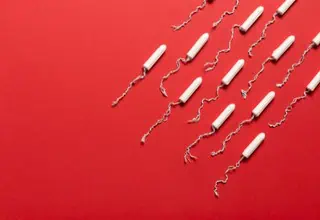
Almost all types of hormonal birth control switch off ovarian function and, therefore, switch off the ovarian hormones estradiol, testosterone, and progesterone. Here’s a bit more about each method.
Lara Briden - The Period Revolutionary
Leading the change to better periods and hormones
Hormonal IUDs such as Mirena or Kyleena can reduce menstrual flow by 90 percent. From a natural health perspective, they have the benefit of not suppressing ovulatory cycles.

Almost all types of hormonal birth control switch off ovarian function and, therefore, switch off the ovarian hormones estradiol, testosterone, and progesterone. Here’s a bit more about each method.

Some basic body literacy:
A proper period or menstrual bleed is a bleed at the end of a natural ovulatory cycle. Any other type of bleed is either a pill bleed (a withdrawal bleed from stopping contraceptive drugs) or an anovulatory cycle (a bleed when there has been no ovulation).
A menstrual cycle is, therefore, an “ovulatory cycle,” in which ovulation is the main event.
⭕
 Hormonal IUDs are different from all types of hormonal birth control in that they do not suppress ovulation and can, therefore, permit natural cycling.
Hormonal IUDs are different from all types of hormonal birth control in that they do not suppress ovulation and can, therefore, permit natural cycling.
Other benefits of hormonal IUDs are that they are convenient and a highly effective method of birth control. They can also dramatically reduce menstrual flow and relieve pain and other symptoms of endometriosis. Hormonal IUDs also have some downsides.

In a normal period, you should not lose more than about 80 mL of menstrual fluid over all the days of the bleed. That’s equivalent to about five tablespoons spread over all the days of the bleed.
In episode two of my podcast/YouTube video, I discuss heavy periods including the role of hormone imbalance, mast cell activation, and insulin resistance; simple period-lightening strategies such as iron, zinc, and a dairy-free diet; and using body-identical progesterone to lighten periods.